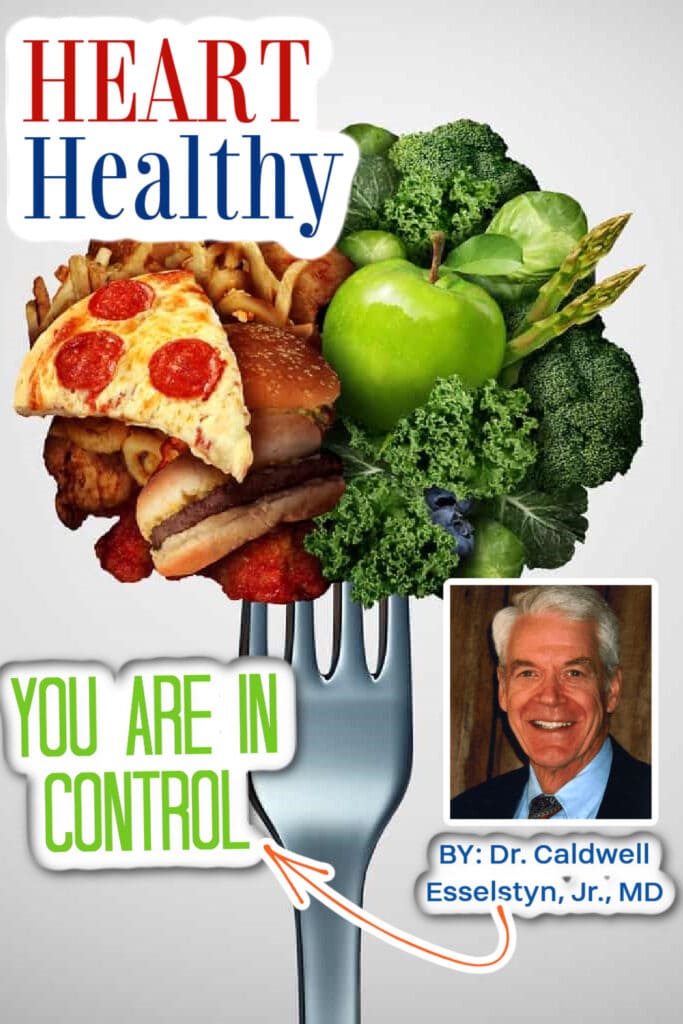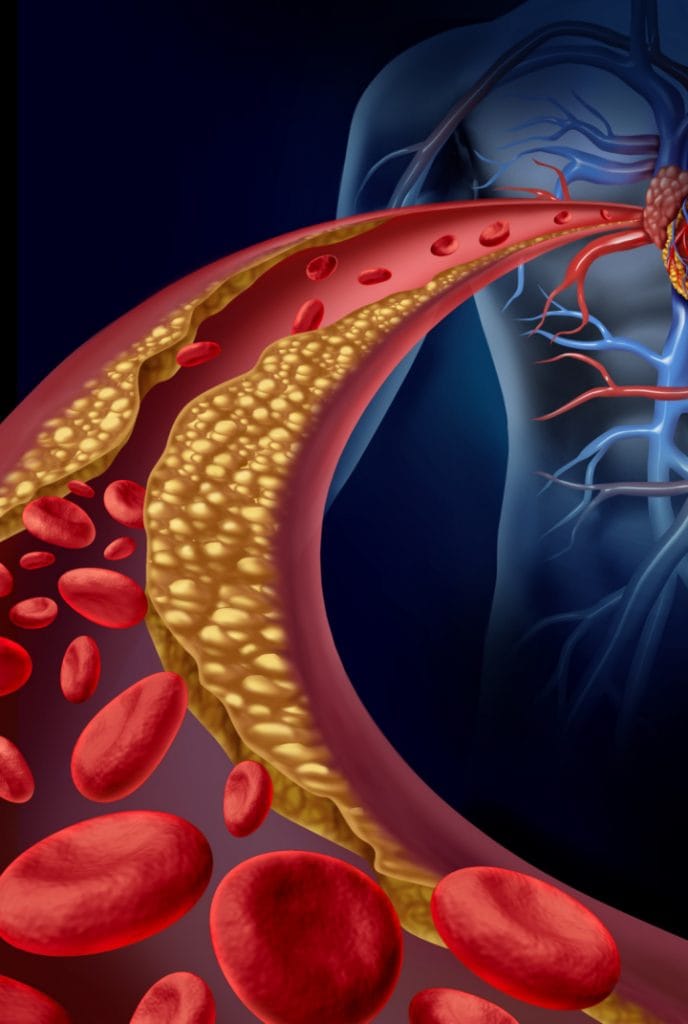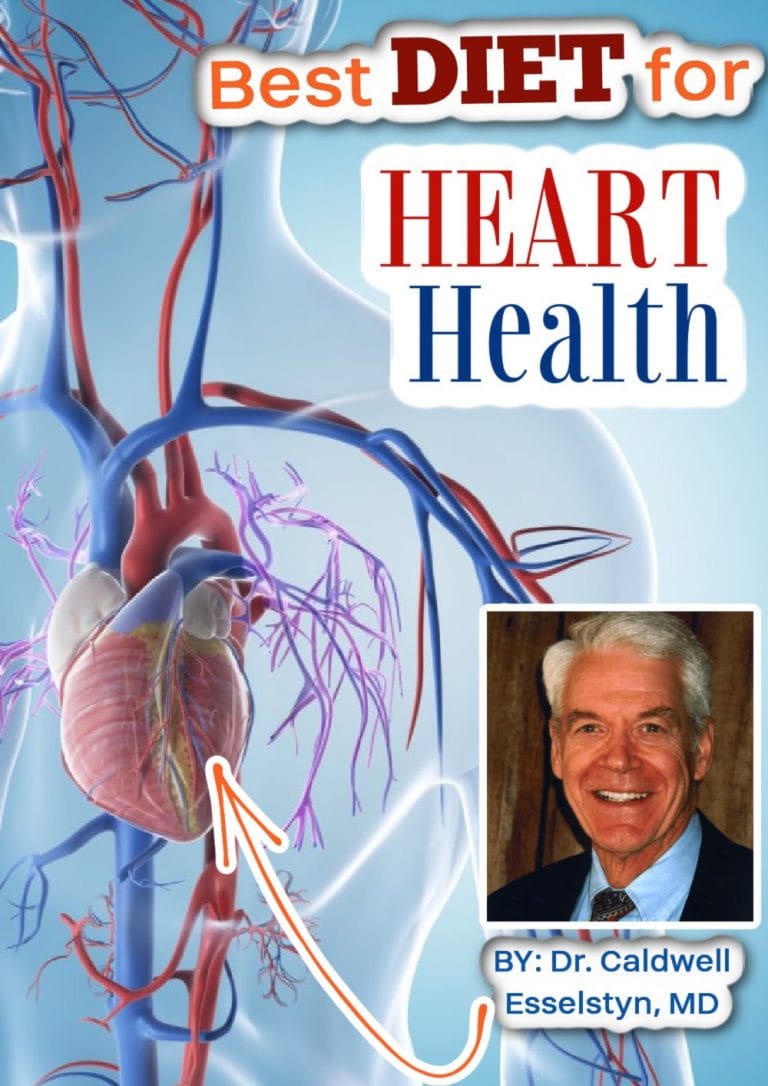Caldwell Esselstyn Jr., MD/ You Are in Control
How much of heart disease prevention and reversal is in our own hands? According to Caldwell Esselstyn, Jr., MD, Consultant at the Cleveland Clinic Center for Wellness and Preventative Medicine, it’s a whole lot. In this article, he shares his research and his patients’ experience.

By: Dr. Caldwell Esselstyn, Jr., MD
The beginning of something new
When I joined the Cleveland Clinic’s staff in 1969, locker room space in the senior surgical staff dressing room was at premium. Locker assignments were alphabetical, and as my last name begins with an E, I was assigned to double up with a doctor whose name began with F. For two years, René Favaloro and I shared the same surgical locker.
Dr. Favaloro, a native of Argentina, was a brilliant, creative, and compassionate surgeon. In May 1967, he started a revolution in cardiac surgery. He cut out the blocked portion of a patient’s right coronary artery, then replaced it with a small piece of vein from the patient’s leg.
In September of that same year, he performed the first true coronary bypass surgery, sewing a piece of vein into the ascending aorta, then tapping it into the coronary artery below the blockage. Over the following years, he developed many variations to the bypass surgery approach, and today is universally recognized as the creator and innovator of that type of surgery.
Coronary artery disease treatments
I have often thought about the irony here–how two surgeons sharing the same locker could end up approaching coronary artery disease from such diametrically opposite positions.

But perhaps Dr. Favaloro and I were not so much at odds, after all. Not long before his death in July 2020, Dr. Favaloro himself described “an unreasonable gap between the medical enthusiasms devoted to acute interventions and the meager efforts currently devoted to secondary prevention.”1
There will always be special situations in which patients with unstable coronary artery disease will require some type of urgent bypass or intervention, but I am convinced that with improved nutrition, we can spare a growing majority of patients from these procedures. And I am pleased to see that quite a number of scholarly cardiologists are beginning to question the wholesale rush toward mechanical intervention in heart disease.
One of them is Dr. John Cooke of Stanford University, who readily acknowledges that angioplasty–while it can help to relieve angina–hardly ever saves lives, and does nothing whatsoever to cure heart disease. He suggests, in fact, that about half of all angioplasties performed in the United States each year are simply unnecessary. Dr. Cooke writes:
“In my opinion, it is far better, and well within your ability, to restore the health of your endothelium rather than have a cardiologist remove it with a balloon catheter. If your doctor recommends angioplasty, tell him or her that if at all possible, you prefer a medical and dietary approach. Angioplasty should be reserved for emergency situations (when someone is in the middle of a heart attack) or when medical and nutritional therapy have been attempted but failed to relieve the symptoms.”2
Dr. John Cooke of Stanford University
Similarly, Dr. James Forrester and Dr. Prediman Shah of Cedars-Sinai Medical Center in Los Angeles have criticized the fact that cardiologists are so quick to intervene with angioplasty or bypass procedures. In their own research, they wrote: “…we are led to the remarkable conclusion that angiography does not identify, and consequently revascularization therapies do not treat, the lesions that lead to myocardial infarctions.”3

Research findings
In June 2005, researchers who conducted a meta-analysis of 2,950 cases of coronary artery disease reported in the journal Circulation that in patients with chronic, stable disease, intervention “does not offer any benefit in terms of death, myocardial infarction or the need for subsequent revascularization compared with conservative medical treatment.”4
And a year later, Dr. Richard Krasuski of the Cleveland Clinic’s top-rated cardiology department said flatly that aggressive treatment of patients with stable angina is generally unwarranted. “We don’t prevent heart attacks or death,” he declared. The reason: “Heart attacks can begin in any heart artery, not just those highly blocked vessels treated by angioplasty or stenting. So in general, the best prevention is control of risk factors that can protect every vessel in the body.”5
The thesis of my research has been absurdly simple: using a plant-based nutrition program to reduce cholesterol to the levels seen in cultures that never experience heart disease. My patients were willing in 1985 to put their cardiovascular health in the hands of a general surgeon who told them this was an illness that did not exist in three-fourths of the earth’s population. If it could be arrested and reversed in monkeys, I told them, it could also be arrested and reversed in humans. They decided to join in my experiment.

Our research data have clearly confirmed that we were right. My patients’ decision to enter the study not only put an end to the progression of their disease; the information we have gleaned from their experience has set a new gold standard in the therapy for coronary artery disease. We can arrest and reverse it. We can make ourselves heart-attack-proof. Coronary artery disease need not exist, and if it does, it need not progress.
Will patients comply?
The argument I still hear from physicians who do not embrace this truth is that they are certain their patients would not comply with such a strict nutrition program. I do not understand how they are so sure of this unless the patients are given a chance; in fact, after counseling patients with severe coronary artery disease for more than twenty years, I have found the opposite to be true.

If you explain to a cardiac patient that there is a program that will quickly relieve or eradicate his pain, that can eliminate any need for further intervention–no more bypass surgery, angioplasties, or stents–that can heal and replenish the vascular system, that has benefits that improve over time, the patient tends to pay attention. In my experience, in fact, as one patient exclaimed–“I can’t believe no one told me there was another option!”–many thoroughly resent the fact that no one ever told them the truth.
What the statistics show
Patients who undergo bypass surgery have, on average, a 2.4 percent chance of dying and another 5 percent chance of sustaining a stroke or heart attack during the procedure. Four percent of patients who get stents have heart attacks during the stenting, and 1 percent die.
Let’s put flesh on that statistic: since there were more than 1 million stent operations last year in the United States, that means 40,000 patients had heart attacks during the procedure–and 10,000 died (stats based on information from 2007). If 10,000 American soldiers died in one year from war, it would be called carnage. As the late Cleveland Clinic urologic surgeon William Engel said, “It is acceptable to lose an occasional patient, but best not to hasten them along.”
*This article is an excerpt from Prevent and Reverse Heart Disease by guest author, Dr. Caldwell Esselstyn, Jr, MD. Published with permission.
About the author

Caldwell B. Esselstyn, Jr., MD received his B.A. from Yale University and his M.D. from Western Reserve University. In 1956, pulling the No. 6 oar as a member of the victorious United States rowing team, he was awarded a gold medal at the Olympic Games. He was trained as a surgeon at the Cleveland Clinic and at St. George’s Hospital in London. In 1968, as an Army surgeon in Vietnam, he was awarded the Bronze Star.
Dr. Esselstyn has been associated with the Cleveland Clinic since 1968. During that time, he has served as President of the Staff and as a member of the Board of Governors. He chaired the Clinic’s Breast Cancer Task Force and headed its Section of Thyroid and Parathyroid Surgery. He is a Fellow of the American College of Cardiology.
In 1991, Dr. Esselstyn served as President of the American Association of Endocrine Surgeons, That same year he organized the first National Conference on the Elimination of Coronary Artery Disease, which was held in Tucson, Arizona. In 1997, he chaired a follow-up conference, the Summit on Cholesterol and Coronary Disease, which brought together more than 500 physicians and healthcare workers in Lake Buena Vista, Florida.
In April 2005, Dr. Esselstyn became the first recipient of the Benjamin Spock Award for Compassion in Medicine. He received the Distinguished Alumnus Award from the Cleveland Clinic Alumni Association in 2009. In September 2010, he received the Greater Cleveland Sports Hall of Fame Award. Dr. Esselstyn received the 2013 Deerfield Academy Alumni Association Heritage Award In Recognition of Outstanding Achievement & Service, and the 2013 Yale University George H.W. Bush ’48 Lifetime of Leadership Award. Dr. Esselstyn has also received the 2015 Plantrician Project Luminary Award, the Case Western Reserve University School of Medicine 2016 Distinguished Alumni Award, and the American College of Lifestyle Medicine 2016 Lifetime Achievement Award.
His scientific publications number over 150, “The Best Doctors in America” 1994-1995 published by Woodward and White cites Dr. Esselstyn’s surgical expertise in the categories of endocrine and breast disease. In 1995 he published his benchmark long-term nutritional research arresting and reversing coronary artery disease in severely ill patients. That same study was updated at 12 years and reviewed beyond twenty years in his book, Prevent and Reverse Heart Disease, making it one of the longest longitudinal studies of its type. In July of 2014, he reported the experience of 198 participants seriously ill with cardiovascular disease. During 3.7 years of follow-up of the 89% adherent to the program, 99.4% avoided further major cardiac events.
Dr. Esselstyn presently directs the cardiovascular prevention and reversal program at the Cleveland Clinic Wellness Institute.
Dr. Esselstyn and his wife, Ann Crile Esselstyn, have followed a plant-based diet since 1984. The Esselstyn Foundation offers its programming free of cost to interested partner organizations including educator groups, public health workers, first responders, students, social workers, and more.
For those of you new to the whole food plant-based lifestyle, we’ve created a FREE 7-Day Plant-Based Menu Planner to help you get started!
Citations
- René G. Favaloro, Journal of the American College of Cardiology, March 15, 1998: “Critical Analysis of Coronary Artery Bypass Graft Surgery: a 30-Year Journey.”
- John P. Cooke and Judith Zimmer, The Cardiovascular Cure: How to Strengthen Your Self-Defense Against Heart Attack and Stroke, Broadway 2002.
- James S. Forrester and Prediman K. Shah, Circulation, August 19, 1997: “Lipid Lowering Versus Revascularization: An Idea Whose Time (for Testing) Has Come.”
- Demosthenes D. Katritsis and John Ioannidis, Circulation, June 7, 2005: “Percutaneous Coronary Intervention Versus Conservative Therapy in Nonacute Coronary Artery Disease.”
- The Cleveland Clinic Heart Advisor, June 2006: “What to Do About Chest Pain: Your Knowledgeable Response to Discomfort Could Save Your Life.”




